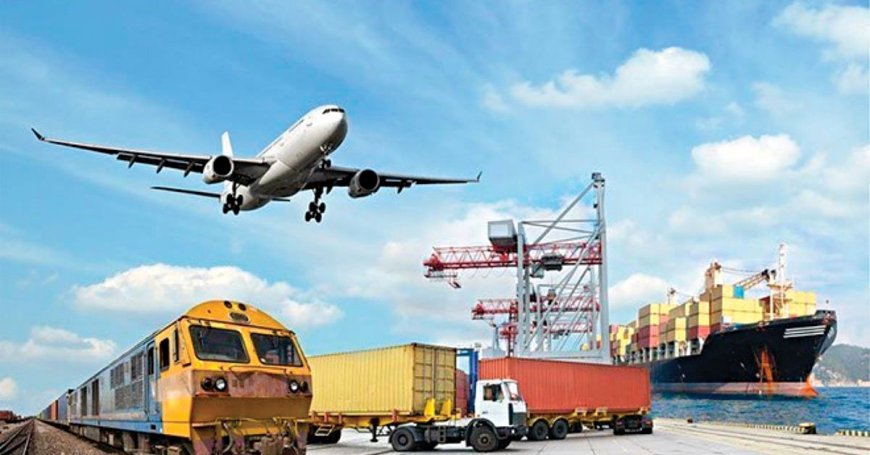PSUs: Driving India's infrastructure growth story

India is poised for an extraordinary decade of unprecedented economic growth. The country’s strategic economic reforms have propelled it into one of the world's fastest-growing economies. During a post-budget webinar on March 4, 2023, Prime Minister Narendra Modi shared the government's vision, stating, "the government considers infrastructure development as the driving force of the economy, and this will help India become a developed country by 2047."
Infrastructure is the backbone for enabling manufacturing and logistics competitiveness, building social connectivity, and driving the economic growth of a nation.
In the latest interim budget 2024, the government has allocated Rs 11.1 trillion ($134 billion) for infrastructure projects. Significant portions include Rs 2.78 trillion for road infrastructure and Rs 2.5 trillion for railway corridors, enhancing energy and mineral transport. Moreover, government aims of providing free rooftop solar electricity for 10 million houses and rural housing construction aim to boost consumption in construction-related sectors.
The imperative of world-class infrastructure extends beyond mere development; it encompasses the realisation of ‘Ease of Living’ for citizens and the fostering of socio-economic progress across regions. In response to same, the Government of India has taken various initiatives that have not only streamlined working within the Government departments but has also enhanced ‘Ease of doing Business’ in the country.
Central to these endeavours is the recognition of advanced transportation networks—comprising robust roadways, railways, ports, and airports—as fundamental components essential for sustaining the envisaged 8% growth trajectory in the future. The $1.3-trillion national master plan for infrastructure, Gati Shakti, has been pivotal in bringing about a systemic and effective reforms in the sector.
Crucially, the implementation of these initiatives hinges significantly on the active involvement of Public Sector Undertakings (PSUs) and Autonomous Bodies (ABs). With their unparalleled expertise and strategic positioning, PSUs and ABs play a pivotal role in translating infrastructure aspirations into reality through a slew of initiatives.
Government Initiatives and programmes
Roads and Highways: At the forefront of India's infrastructure revolution is the Bharatmala Pariyojana, a visionary program helmed by the Ministry of Road Transport & Highways. Over the past nine years, an impressive 50,000 km of National Highways (NH) have been added to the country's road network, marking a significant milestone in the nation's journey towards comprehensive infrastructure development. Among the monumental projects under Bharatmala is the construction of the Delhi-Mumbai Expressway, spanning a staggering 1,386 km and symbolising India's ambition and scale of endeavour in creating world-class transportation arteries.
Further enhancing India's infrastructure landscape is the National Highways Logistics Management Limited (NHLML), with the Parvatmala Pariyojana and Multimodal Logistics Parks (MMLP). The Parvatmala Pariyojana entails 200 projects with Rs 1.25 lakh crore investment over five years. MMLPs, integral to NHLML, consolidate freight movements using larger trucks, rail, or coastal shipping to reduce logistics costs. They transition freight movement to a hub-and-spoke model, integrating road, rail, and water/air connectivity. NHLML plans 35 logistics parks as vital nodes in India's logistics network.
These initiatives are aimed at fostering regional connectivity, stimulating economic growth, and enhancing the overall quality of life for citizens across the nation.
Railways: In the realm of railways, the Dedicated Freight Corridor Corporation of India Limited (DFCCIL) is leading the charge towards a more efficient and cost-effective logistics ecosystem. While two Dedicated Freight Corridors (DFCs) spanning 3,360 km (the Western Dedicated Freight Corridor and the Eastern Dedicated Freight Corridor) are at commissioning stage, another three corridors are at the planning stage. DFCCIL aims to revolutionise freight transportation by decongesting the existing Indian Railways network, increasing the average speed of goods trains threefold, facilitating longer and double-stack container trains, and connecting ports and industrial areas to expedite goods movement.
Meanwhile, Container Corporation of India Ltd (Concor) has emerged as a beacon of innovation and efficiency in the realm of container logistics. Boasting the largest network of 61 Inland Container Depots (ICDs) and Container Freight Stations (CFSs) across India, Concor plays a pivotal role in promoting containerisation and facilitating seamless trade operations through its modern rail wagon fleet, customer-centric commercial practices, and cutting-edge information technology solutions.
The Rail Land Development Authority (RLDA), established under the Ministry of Railways, aims to develop vacant railway land for commercial use, generating revenue through non-tariff measures. With approximately 43,000 hectares of unused land under Indian Railways, RLDA collaborates with zonal railways to identify plots not needed for operational purposes.
In the endeavour to realise the vision of a high-speed rail corridor, the inception of the National High-Speed Rail Corporation Limited (NHSRCL) in 2016 marked a significant milestone.
Rail Vikas Nigam Limited (RVNL) stands as the pivotal construction arm of the Ministry of Railways, driving project implementation and transportation infrastructure development forward. Furthermore, Rail India Technical and Economic Service (RITES), with its nearly five decades of expertise, emerges as a cornerstone in the transport consultancy and engineering sector in India. Offering a comprehensive spectrum of services under one roof, RITES has garnered widespread recognition, extending its footprint to more than 55 countries across Asia, Africa, Latin America, and the Middle East. This global presence solidifies RITES as the preferred partner for clients across diverse sectors, shaping the future of transportation infrastructure worldwide.
Airports and Aviation: The Airports Authority of India (AAI) earmarked an impressive capital outlay of approximately Rs 98,000 crore for the expansion and modernisation of airports across the country. This strategic investment underscores India's commitment to enhancing its aviation infrastructure, bolstering connectivity, and elevating passenger experiences to global standards.
Under the visionary Regional Connectivity Scheme (RCS) - UDAN, the government aims to democratise air travel by connecting underserved airports and revitalising existing airstrips and airports. With over 130 lakh people benefiting from the scheme so far, and 517 RCS routes operational connecting 76 airports, the transformative impact of UDAN is undeniable. Additionally, an allocation of Rs 1,000 crore under Phase II of the scheme underscores the government's unwavering commitment to expanding air connectivity and stimulating economic growth in the hinterlands.
Ports and Inland Waterways: The Sagarmala Scheme, a flagship initiative of the Ministry of Ports, Shipping, and Waterways, is poised to revolutionise India's maritime landscape. Leveraging the nation's extensive coastline and navigable waterways, Sagarmala aims to unlock the economic potential of coastal regions and establish India as a global maritime powerhouse. With a staggering coastline of 7,500 km and 14,500 km of potentially navigable waterways, the scope and scale of Sagarmala's ambition are unparalleled.
To facilitate the implementation of Sagarmala projects, the Sagarmala Development Company Limited (SDCL), Inland & Coastal Shipping Ltd (ICSL) and Indian Port Rail & Ropeway Corporation Limited (IPRCL) have been instrumental in providing funding support and driving project execution. Sethusamudram Corporation Ltd is also participating in this project. Through strategic investments in port infrastructure, road and rail connectivity, and coastal community development, Sagarmala is poised to transform India's maritime sector and catalyse inclusive growth across the nation.
Energy: India's energy transition agenda is propelled by major public sector companies like National Thermal Power Corporation (NTPC), National Hydroelectric Power Corporation (NHPC), NLC India Ltd, and Coal India Limited (CIL), each playing a pivotal role in driving sustainable development and reducing reliance on traditional energy sources. With an installed capacity of 68.5 GW, NTPC aims to reach 130 GW by 2032, with a significant portion from renewable sources. NTPC is actively implementing 2,298 MW of renewable energy projects, including the ground-breaking Ramagundam 100 MW Floating Solar project.
Similarly, NHPC, with its leadership in hydropower development, is diversifying into solar and wind power, with ambitious plans for solar plants including a joint venture with GEDCOL for 500 MW floating solar projects in Odisha. NLC India Ltd, with a renewable energy capacity of 1.4 GW, is expanding its solar and wind projects, aiming for 2.8 GW by 2025. Meanwhile, CIL, the largest coal producer, is investing in renewable energy with plans for 3 GW solar projects by 2024 and establishing solar PV module manufacturing plants.
Urban Infrastructure: Under the purview of the Ministry of Housing and Urban Affairs, Hindustan Prefab Limited (HPL) stands as a cornerstone in India's urban infrastructure development. Leveraging its extensive experience and innovative Prefab technology, HPL plays a pivotal role in constructing vital civil infrastructure, including mass housing, educational institutions, and healthcare facilities, contributing significantly to national development.
In parallel, NBCC, headquartered in Delhi and recognized as a Navratna Central Public Sector Enterprises (CPSE), exemplifies a commitment to excellence in quality, innovation, and timely project delivery. Through its core operations spanning Project Management Consultancy (PMC), Engineering Procurement and Construction (EPC) services, and Real Estate Development, NBCC leads the construction sector, executing landmark projects and fostering India's infrastructural growth. The company has experienced remarkable growth, with its FY 2018-19 turnover reaching Rs 10,151.37 crore from a nominal Rs 494 crore in FY 2002-03.
Furthermore, the Housing and Urban Development Corporation Ltd (HUDCO) stands as the premier techno-financing public sector enterprise in housing and infrastructure development. With an authorised capital of Rs 2,500 crore and a paid-up equity of Rs 2,001.90 crore, HUDCO continues to play a pivotal role in facilitating sustainable urban development across the country.
In conclusion
India's journey towards world-class infrastructure represents more than just a developmental imperative; it embodies a visionary pathway towards realising socio-economic aspirations and solidifying its position as a global powerhouse in the 21st Century. PSUs and ABs play indispensable roles in this trajectory, covering the entire lifecycle of the projects from financing and planning to execution. By fostering collaboration between public and private entities, embracing innovation, and prioritising sustainability, India is laying the foundation for inclusive growth, enhanced connectivity, and improved quality of life for its citizens. As the nation strides forward into this transformative era, the promise of a brighter, more prosperous future beckons, fuelled by the enduring spirit of progress and resilience that defines the Indian ethos.
Karan Sethi, Senior Assistant Vice President, Invest India

Pratyush Kumar, Senior Investment Specialist, Invest India

Nikhil Gandhi, Senior Investment Specialist, Invest India








